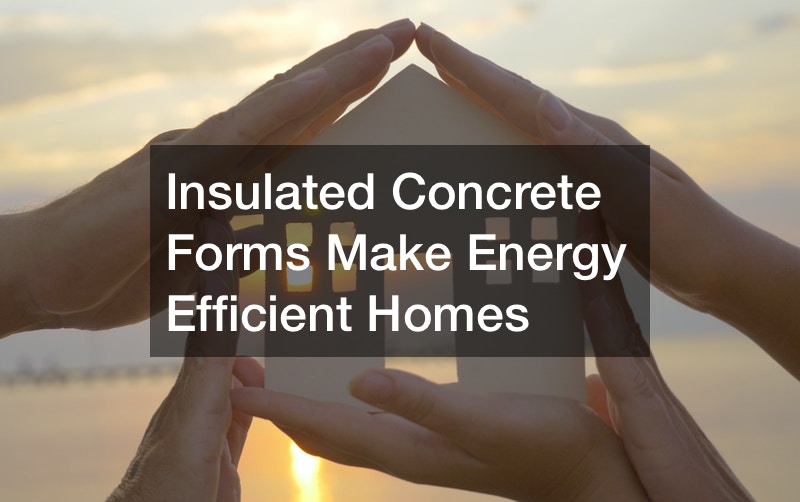
Insulated Concrete Forms Make Energy Efficient Homes

Concrete mixes typically contain aggregates, cement, and sand. If you need a particularly strong concrete mix, you should look for a product that contains a relatively large amount of sand and aggregate material. Commercial concrete mixes are often made from gravel as well.
They’ll still contain sand and cement, but manufacturers will use gravel instead of aggregate materials in many commercial concrete mixes. The cement that is used in certain commercial concrete mixes might also be somewhat different from the cement that’s used in other concrete mixes. This cement might be made out of shale, chalk, clay, and limestone. Cement made with these ingredients will be particularly strong. It’s used in masonry work and many large construction projects.
Finding a high-quality commercial concrete mix should not be difficult. You can search for ‘concrete companies close to me’ to get started. Looking for ‘concrete suppliers in this area’ might get you some more specific results. These organizations should have the concrete foundation supplies that you need. A concrete contractor can help you use the concrete effectively. These contractors can also help you when you’re looking for a concrete mix. You can discuss the project with them, and the concrete contractors can offer recommendations.
Energy efficient systems are always a hot topic among building owners and construction companies alike, since better efficiency can save costs in the long run and make a building more attractive to contractors and buyers. Often, heat and cool air will leak into or out of a house or office building, and this means that the heating and cooling systems have to work extra to maintain the desired internal temperature, and this drives up energy costs year-round, especially in winter and summer. There is a particular building technology to make energy efficient homes possible: insulated concrete forms, or ICFs. What are the, and how do they work as home construction materials?
The Basics of ICF
ICF products are typically interconnected blocks that have an open hollow space on the inside where the ICF blocks are filled with rebar and concrete, bypassing the use of stick and wood-based construction, which often has a lot of gaps and insulation weaknesses. ICFs, however, are tightly sealed together and are pre-made to fit, so there is virtually no leakage. This technology was patented in 1966 by Werner Gregori, a Canadian contractor, and ever since, ICFs have been used to make energy efficient construction around the world.
The energy efficient nature of ICF materials can make the technology very attractive. These blocks can save a homeowner anywhere from 20 to 25% on annual heating and cooling expenses, and in a larger building, this can add up fast. On top of that, ICF building blocks are a highly advanced construction material in their own right. For one thing, a building constructed with ICF products is six to nine times stronger than a conventional building is, and they can protect properties from natural disaster such as hurricanes and tornadoes, since they can withstand wind speeds up to 402 kilometers per hour. Building the flooring with ICFs is also a solid plan, since ICF decking is 40% lighter than concrete and has better insulation. Building a basement from this material is also cost-saving, because the reduction in construction steps means a cost reduction of up to 40%.
According to Pure Living for Life, the advantages of ICFs go even beyond energy efficient heating and cooling systems and making a house resistant to strong winds. Once the construction is complete, a contractor and building crews can cover the ICF brick walls with conventional bricks, stucco, siding, rock, or anything else desired for a natural and gorgeous appearance. A visitor would not even know that the house is built with energy efficient ICFs. Also, the concrete inside the bricks is surrounded by cushioning foam, which can protect the concrete from the usual wear and tear, such as cracks or shifts from environmental stresses.
Miscellaneous benefits from using ICFs are varied, according to Common Sense Home. Pests such as rats and squirrels cannot chew their way into the house and damage electrical cords or cause leaks, since the walls’ inner material is foam-padded concrete, which is too tough for animals to break into. In termite-prone ares, meanwhile, using pre treated foam against these insects is recommended. Since the walls are concrete on the inside instead of wood, there is no chance of an electrical fire in there, and some radiation such as gamma rays are blocked. And not only will these energy efficient walls resist strong winds, but they can resist earthquakes, too. As for what magnitude can be endured, a homeowner should consult the contractor and other experts.
